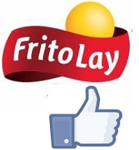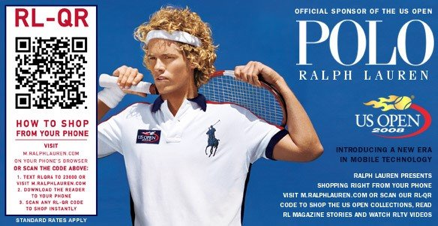The Difference A Company’s Size Makes In Social Media
Maybe the size of a company has never been pondered by the employees or consultants who are managing their social media campaigns. However, whether or not a company is considered a small business or a big company can make a significant difference in overall strategy, timeliness, and overall presence on social networks like Facebook, FourSquare, […]
Maybe the size of a company has never been pondered by the employees or consultants who are managing their social media campaigns. However, whether or not a company is considered a small business or a big company can make a significant difference in overall strategy, timeliness, and overall presence on social networks like Facebook, FourSquare, and Twitter.
Small businesses may automatically be thought of as the “underdogs” when compared to large brands and multi-million dollar companies. But when it comes to social media, this isn’t always the case. Many small businesses have used their size as an advantage to create an innovative and successful online social media marketing strategy.
On the other hand, large businesses have used their influence and history to extend their heavy brand presence into the digital forum. As with anything, there are advantages and disadvantages for both small and large businesses when it comes to social media.
The Innovation Brewing In Small Businesses
Small businesses become successful by either thinking of the ideas that no one else has before or taking an established norm and doing it better in their community and for their customers. Small business owners and employees are more likely to work harder because they have more invested into the business and they are affected dramatically when it succeeds or fails.
This connectivity to the lifeblood of the business can certain be to its advantage, as employees may be more eager to do their job in a new and innovative way. Because small businesses inherently have fewer employees than bigger companies, they also have less “red tape” to move through when they are posting content on Twitter or completing a custom tab on Facebook.
These types of tasks may be checked by 4-5 different employees at a large company, whereas a social media coordinator at a small business may only need to ask the owner or an office manager for approval, if anyone at all. This may lead to better ideas being approved and live on social networking profiles more quickly.
Another social media immersion tactic that small businesses can utilize faster than big companies or nationwide brands is their presence on new social networking websites. For instance, it would be much easier for a single ice cream parlor with one location to sign up for FourSquare and begin creating check-in deals than it would for a nationwide chain like Baskin Robbins, who even if a single owner is a franchiser of the chain, may need to get approval from their corporate headquarters before beginning a sponsored FourSquare deal.
Even though the ability to try new networks and marketing tactics faster and to be more innovative, there can be great stressors placed on a small business that big companies may not have as much trouble with.
For instance, if a boutique marketing agency only has one social media coordinator for both their clients and themselves, if that employee decides to use his/her paid vacation and go to Italy for a week, the agency may have trouble finding someone to take over their work, especially if there isn’t anyone else with as much experience.
Small businesses can be proactive about occasional employee absences by making sure all employees are cross-trained and vacation is scheduled out enough in advance to make sure all work is covered.

If a potato chip manufacturer that only distributed to a few cities or states attempted the same campaign, they would likely receive a growth in likes, but no where near the amount that Frito Lay experienced. This is because Frito Lay is already an established nationwide brand who has customers that know them buy name.
Small businesses may combat this by focusing on their core demographic area to increase local brand loyalty– many customers may chose a smaller brand once they know it is created in or around the city or state they are living in.
The Power Of Big Businesses
A company’s success and the methods it used to get there may also occasionally be its downfall. For instance, a company that starts out with 5 employees and grows to over 200 in a span of 3 years may not have the manpower or education to keep up with product demand; and as a result innovation and further product developments may suffer.
However, with power and success comes large marketing budgets which may allow for an entire internal social media department (like Dell or McDonald’s), which gives the company the financial backing to produce the level of campaigns, contests, and specials to grow loyal fan bases and online communities.
Because a company the size of McDonald’s or Frito Lay requires more manpower to run its social media presence, there are a lot more steps to take when it comes to producing content and messages. Even though their budgets may be larger, the time it takes to create, approve, and publish social media tweets, posts, etc., may take much more time than a small business has to spend.
Many contests or messages may need approval from the legal department and upper level executives may need to approve new campaigns before they can go live. This may take several days or weeks at a time. The upside to this is that big companies may feel more prepared because they took so much time to approve any campaigns, which will make the effort more streamlined overall.
Another benefit of big company social media strategy is the ability to tie in social media with print, television, or radio advertising. Combining traditional and social media marketing techniques can lead to crossover, leading to more sales overall. For instance, many companies are now placing QR codes on their print products to get customers to visit their website for special offers.
Nationwide companies have the ability to saturate all media channels with their marketing campaigns, which small businesses may not have the luxury to do.
Even though big and small businesses each have their own advantages and disadvantages, the fact remains that with a solid social media strategy, any business can be successful in building engaging communities online. All it takes is knowing the target market and the “ideal” customer. The rest is up to solid customer service and knowledgeable employees who can carry it off without a hitch.
Contributing authors are invited to create content for Search Engine Land and are chosen for their expertise and contribution to the search community. Our contributors work under the oversight of the editorial staff and contributions are checked for quality and relevance to our readers. The opinions they express are their own.
Related stories
New on Search Engine Land

